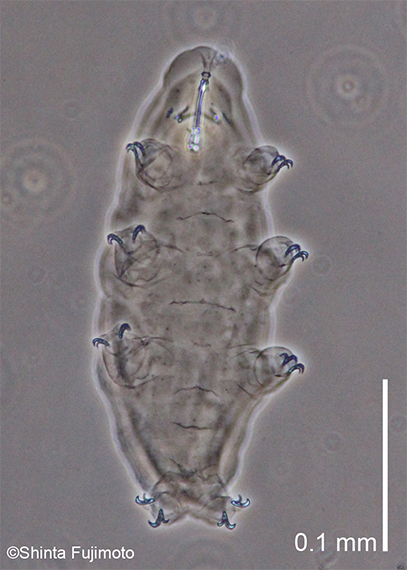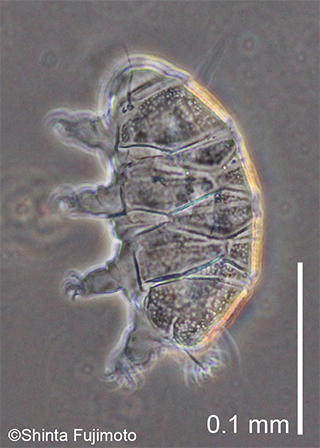What are tardigrades?
Based on the body plan, animals (heterotrophic multicellular organisms) could be organised into 30+ groups called phyla*. Tardigrades are one of them, phylum Tardigrada. They are characterised by features such as postembryonic development accompanied with moulting, presence of cuticular exoskeleton, four pairs of lobopodous legs (rather telescopic), and so on (books and google search would tell you more). The most closely related phyla are Arthropoda (such as crustaceans, insects, spiders, centipedes, etc.) and Onychophora (aka velvet worms). The three phyla are called Panarthropoda.
tardigrades are microscopic animals known from the terrestrial, frshwater, and marine environment and more than 1200 species are described (for an updated list of species go to the Laboratory of Evolutionary Zoology, Universit? degli studi di Modena e Reggio Emilia, tardigrade tools: Checklist of tardigrade taxa; or simply google search "Actual checklist tardigrada"). Although there are variation in the ability, they are known to withstand severe environmental conditions. They have even been sent to space and exposed to radiation.
Tardigrades have three big groups (classes): Eutardigrada, Heterotardigrada, and Mesotardigrada.
Eutardigrada (right top micrograph) harbours the most number of species and most of them are terrestrial and some adapted to the freshwater and marine environment. Basically they look like flexible sausages with short legs (maybe a too rough description). To identify species, the claws, feeding organs (buccal pharyngeal apparatus), and eggs are used.
Heterotardigrada (right middle micrograph) harbors most of the marine representatives and one lineage adapted to the terrestrial environment. The marine forms have high morphological diversity (see What do they look like?. In constrast to eutardigrades, most terrestrial heterotardigrades have cuticular armours at least on their dorsal side (right middle micrograph). There is also a very interesting freshwater heterotardigrade but we need to re-collect and study it before any discussion.
Eutardigrada and Heterotardigrada are easily distinguished by the absence of external sensory organs in eutardigrades* and the orientation of the claws. In eutardigrades, the claws are combined in to double claws or aligned in two rows whereas heterotardigrades have claws aligned side by side in one row.
(*) Apochela has oral papillae but their homology to the sensory organs in heteratardigrades is not confirmed.
Mesotardigrada shows an intermediate or in otherwords mosaic morphology of the two classes dsicussed. It is represented by one species, Thermozodium esakii, collected from a hot spring in Japan (Rahm 1937) and never found ever since (right bottom photo). A group of scientists recently surveyed the area but they did not suceed in re-discovering this rare taxon and suggested that its existence is dubious (Suzuki et al. 2017; Grothman et al. 2017).
BUT I believe this species exists.



